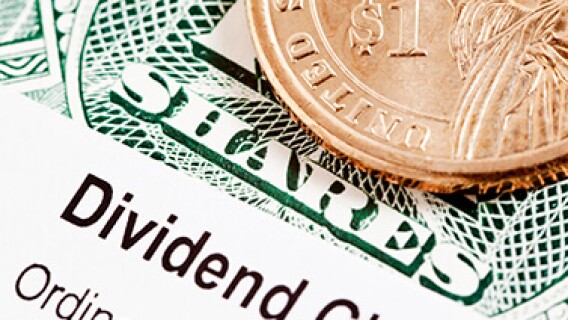Stereotypically scary October continues to batter the market. However, thanks to resilience in low-risk dividend stocks, our subscribers aren’t running for the hills yet. In fact, I’ve gotten more questions from investors looking to take advantage of this buying opportunity than I have panicked messages. Here’s an email I got from a Cabot Dividend Investor subscriber named Andrew last week:
“I have a bunch of REITs and they actually held up pretty well the last two days, as did a couple MLPs. The [Wall Street Journal] actually had a column today talking about whether there might now be some rotation to value after the FAANG bunch got whacked so hard (long overdue, IMHO), or if security and risk aversion means a move to dividend stocks, even though climbing yield is seen as a threat.”
Andrew is right: most dividend-paying stocks, even ones that are usually sensitive to rising interest rates, have been holding up better than the broad market over the past two weeks.
Investors always turn to more conservative investments when the market gets rocky, but the resilience in yield-sensitive names this time is somewhat unusual. It could reflect a longer-term rotation into more value-oriented, low-risk dividend stocks, after years of dominance by sexy but pricey growth stocks like Facebook (FB) and Tesla (TSLA).
[text_ad use_post='129632']
That’s good news for dividend investors. It also means investors who want to protect their portfolio during this correction have lots of options other than cash.
Below are four of my favorite low-risk dividend stocks from the sectors that have been holding up well during this market correction.
Correction-Defying Sector #1: Consumer Staples
Since October 1, the S&P 500 has declined 4.6%, but the consumer staples sector (XLP) has traded sideways. So the first stock on my list is McCormick & Co. (MKC), a consumer staples stalwart. Since the start of the month, MKC has not only gained nearly 5%, the stock has also hit a series of new 52-week highs, including one just this Friday.
Low-Risk Dividend Stock: McCormick & Co. (MKC)
Founded in 1889, McCormick sells grocery products including spices, condiments, oils, broth, recipe mixes, salad dressings, baking ingredients and more. The company’s brands include McCormick, Old Bay, Zatarain’s, Thai Kitchen, Club House and Lawry’s. Last year, McCormick acquired the French’s and Frank’s RedHot brands from Reckitt Benckiser.
Consumer products make up about 62% of sales. The rest are to foodservice and food and beverage companies. In addition to commercial versions of the above products, McCormick makes “custom flavor solutions” for food companies, like the powder that can make a potato chip taste like sour cream and onions or BBQ.
Groceries and ingredients are stable, counter-cyclical businesses. Economic slowdowns and stock market corrections don’t have much of an impact on how much mustard or oregano people buy. That means McCormick’s income stream is very stable, and revenues have risen steadily in each of the past ten years.
McCormick’s steady revenue stream translates into equally steady dividend payments: the company has paid dividends since 1925, and has increased the dividend every year for 31 straight years (making it a Dividend Aristocrat). Over the past decade, McCormick has increased the dividend by an average of 9% per year, and the stock now yields 1.5%.
That makes MKC a great safe investment to own when the market environment is uncertain.
Correction-Defying Sector #2: Utilities
The second low-risk dividend stock standing out for its resilience lately is a utility. Over the past month, utilities have been the best-performing sector in the S&P 500, despite a significant spike in interest rates. It’s clear that utilities’ reputation as safe investments to own when the market is acting up is outweighing their rate-sensitive characteristics for now.
Low-Risk Dividend Stock: Consolidated Edison (ED)
Consolidated Edison is the gas, electric and steam utility for New York City and the surrounding area. The company traces its roots to 1823, and has increased its dividend every year since 1975 (making it another Dividend Aristocrat). Business is stable, and ConEd generally delivers low single-digit revenue and earnings growth each year. In 2018 and 2019, revenue is expected to rise by about 2%, and EPS by about 4%. Dividend increases are generally in the low single digits as well.
Like most utilities, the stock can be sensitive to changes in interest rates, but the sector priced in four 2018 interest rate hikes early this year, and has mostly been treading water since the second quarter.
There’s not a lot to get excited about with ConEd, but it’s a great long-term investment that makes it easy to sleep at night. I’ve had it in the Cabot Dividend Investor portfolio since 2014, and we’ve earned a 53% total return including dividends.
For more low-risk dividend stocks like ConEd and McCormick, consider taking a trial subscription today.
Correction-Defying Sector #3: Health Care
Not all health care stocks have done well this month—the sector is down about 2.5%—but larger, dividend-paying health care blue chips are holding up very well. So far the market correction has barely registered for UnitedHealth, which is one of the largest health insurers in the U.S.
Low-Risk Dividend Stock: UnitedHealth Group (UNH)
About 63% of the company’s revenues come from the UnitedHealthcare segment, which provides health insurance through employer-sponsored, individual, Medicare, Medicaid and military plans. Another quarter of revenues are generated by the company’s pharmacy benefit manager, OptumRx. The remainder of revenues come from OptumHealth, which provides health services on a contract basis as well as through its own health centers, and OptumInsight, a provider of technology to the health care industry. (OptumInsight is currently the smallest contributor to revenues, but boasts margins of around 20%.)
The company’s vertical and horizontal integration give UnitedHealth an advantage in delivering healthcare profitably. For example, when members of UnitedHealthcare insurance plans are treated at OptumHealth medical centers, the revenue stays entirely within the company. UnitedHealth’s operating margins are a rock solid 7%, and the company’s balance sheet is strong.
The company reported excellent earnings just last week, and immediately jumped 5%—more than making up for the previous week’s pullback. Third-quarter revenues rose 12% and adjusted EPS jumped 28%, both beating estimates. Even better, UnitedHealth raised their full-year guidance, and now expects full-year adjusted earnings of $12.80 per share, up 27%.
Plus, the company has an eight-year history of dividend growth and has increased its dividend by 26% per year, on average, over the past five years.
Correction-Defying Sector #4: REITs
In February, the yield on the 10-year Treasury spiked from 2.4% to 2.9%, and REITs (as measured by the Vanguard Real Estate ETF (VNQ)) dropped 14%. Over the past six weeks or so, the 10-year yield has moved from 2.8% to over 3.2%, but REITs fell less than 10%. It’s also worth noting that after February’s correction, REITs spent the next 7 months climbing steadily, even as interest rates stayed elevated.
Low-Risk Dividend Stock: Omega Healthcare Investors (OHI)
Omega Healthcare Investors owns assisted living facilities and nursing homes. Omega currently own over 900 long-term care facilities, spread across 41 states. The industry is growing steadily as the U.S. population ages, but declining Medicare reimbursement rates presented a challenge in recent years. That plus other factors (rising labor costs and changing hospital referral practices among them) contributed to big declines in Omega’s funds from operations (FFO, a widely-used measure of REIT cash flow) last year. FFO is expected to decline again this year, as are revenues.
However, revenues and FFO are both expected to start recovering next year, with analysts currently anticipating growth of 3% to 4% in both. The stock bottomed back in April, after first quarter results beat expectations, and has been advancing since.
Because of the unfavorable industry trends, OHI’s yield has soared to 8.0%. That’s not sustainable long-term—if Omega’s recovery is the real thing the yield will eventually come down—the company does have a strong dividend history. Omega has paid dividends since 1992 and has increased the dividend every year since 2003, often multiple times per year. Over the past five years, the company has increased the dividend by an average of 7% per year.
For investors with higher risk tolerance, OHI could be an interesting place to ride out this correction while earning fat dividends.
[author_ad]

